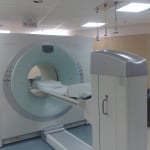 Thanks to blog reader Justin Lewis for sending me a link to a post on his hospital's blog — from Memorial Health System in Colorado Springs: “Lean Effort Pays Big.” Justin leads Memorial's “Lean Team” and shared their success story.
Thanks to blog reader Justin Lewis for sending me a link to a post on his hospital's blog — from Memorial Health System in Colorado Springs: “Lean Effort Pays Big.” Justin leads Memorial's “Lean Team” and shared their success story.
They applied the dual Lean/Toyota Production System principles of continuous improvement and “respect for people” to address problems related to radiology patient flow, leading to improvements in patient flow and financial performance.
Some of the results:
- CT scans increased by 5 scans per day (with additional capacity to schedule another 5 per day)
- Reductions in waiting times for CT scheduling and registration
- Process improvements that led to fewer insurance billing denials and increased billing — millions of dollars per year in financial impact
I'd love to know more about the details of the process improvements that are allowing them to bill more… seeing revenue increases in addition to cost reduction is a great outcome… far more palatable than resorting to the traditional healthcare cost cutting and layoffs.
The blog post describes how the team used the PDCA improvement model — first studying their existing process and working to properly frame the problem instead of jumping to solutions.
From the post:
And, out of the gate, there were longtime associates who criticized the project, saying: “We've been down this path before – we already know what the problems are.”
The response, Lewis said, was: “Well, that is exactly the reason why we are here because that kind of thinking has resulted in this problem over and over again.”
In a quarter mile of process maps, employees also began to see where processes – not people – fell short.
We often talk about “jumping to solutions” being a bad thing in problem solving and process improvement… but “jumping to a problem statement” can also be problematic. Instead of assuming we know the problem, going to the Gemba (where the work is actually done) to observe the process and talk to customers (internal customers or patients) can be very powerful and eye opening. The actual problem we should be solving isn't always the same as the initial definition. It takes discipline to make sure we are understanding and framing the problem properly.
As the famed Charles Kettering, of the olden days of General Motors, famously said:
“a problem well–stated is half-solved.”
Thanks to Justin and the Memorial team for sharing their work — the process, the lessons learned, and the results.
Please scroll down (or click) to post a comment. Connect with me on LinkedIn.
Let’s work together to build a culture of continuous improvement and psychological safety. If you're a leader looking to create lasting change—not just projects—I help organizations:
- Engage people at all levels in sustainable improvement
- Shift from fear of mistakes to learning from them
- Apply Lean thinking in practical, people-centered ways
Interested in coaching or a keynote talk? Let’s start a conversation.










Great example, Mark. And I like the explanation of how to address the early resistance (“we already know what the problems are”), since I’ve seen improvement get derailed too many times by those with scars from previous attempts to improve.
Good point that they might truly know the problem and previous attempts to solve it failed (or there were no real efforts, which leads to cynicism).
But sometimes they might have failed because the problem wasn’t understood properly to begin with.
I don’t know if you saw the recent TED talk by David Kelley
about the 6 minute mark he starts to tell the story of how a 80% of kids needing an MRI at a hospital had to be sedated and how a few changes lowered that to 10% lowering both costs and increasing the use of the MRI machine since they didn’t have to wait for an anesthesiologist.
Thanks, I hadn’t seen that video. Thanks for sharing.
[…] Lean Effort Pays Big in a Colorado Springs Hospital by Mark Graban – “Instead of assuming we know the problem, going to the Gemba (where the work is actually done) to observe the process and talk to customers (internal customers or patients) can be very powerful and eye opening.” […]